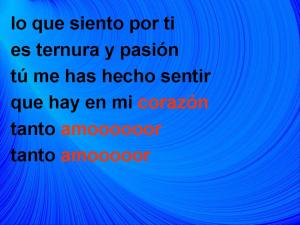I’ve posted a couple of times now about this unit on goals and dreams that my Spanish IV students are doing (we’re almost done). I have lots of activities to add to what I’ve already posted about, but something is happening that has interrupted and enriched the unit: Venezuela. Thanks to the power of Twitter, I have been able to incorporate the explosive situation in Venezuela into a very real, immediate, authentic source for Metas y Sueños.  If you have followed this blog for a while, you may remember that I have a huge unit that is loosely called Social Awareness through music; I use this unit in Spanish III. About two thirds of my Spanish IV students were in my Spanish III classes last year, and therefore have some background knowledge of Venezuela. Last year we followed the death of Hugo Chavez and the subsequent election between Maduro and Capriles. So, last Friday, February 21, after having seen the Twitter activity with #SOSVenezuela, I had my students pull out their cell phones (Twitter is blocked at school) to begin reading the tweets with #SOSVenezuela. We also had laptops out, so they could google Venezuela and find out information to answer their questions. We spent most of the class “discovering” and talking. What was happening in Venezuela? Why? What were the goals and dreams of the students? The goals of Leopoldo Lopez and his supporters? The goals of Nicolas Maduro? It was the best of helpful technology, high interest, situational immediacy, and the inquisitive minds that teenagers can exhibit.
If you have followed this blog for a while, you may remember that I have a huge unit that is loosely called Social Awareness through music; I use this unit in Spanish III. About two thirds of my Spanish IV students were in my Spanish III classes last year, and therefore have some background knowledge of Venezuela. Last year we followed the death of Hugo Chavez and the subsequent election between Maduro and Capriles. So, last Friday, February 21, after having seen the Twitter activity with #SOSVenezuela, I had my students pull out their cell phones (Twitter is blocked at school) to begin reading the tweets with #SOSVenezuela. We also had laptops out, so they could google Venezuela and find out information to answer their questions. We spent most of the class “discovering” and talking. What was happening in Venezuela? Why? What were the goals and dreams of the students? The goals of Leopoldo Lopez and his supporters? The goals of Nicolas Maduro? It was the best of helpful technology, high interest, situational immediacy, and the inquisitive minds that teenagers can exhibit.
After having followed the situation all through the weekend, I knew that I had to incorporate it into my lesson plan for this week, which was going to throw my timing off for the entire unit, and ultimately has made me do away with the last original Essential Question and evaluation for the unit (la banda sonora de tu vida). We spent Monday viewing videos that had been tweeted about on Twitter, and working through many, many images, memes and posters. I put all of the images on a SMARTboard presentation so that they could see them in color and very large. The vocabulary was an amazing tie in with our active vocabulary for this unit (rendirse, darse por vencido, metas, sueños, vale la pena, alcanzar, etc.)
I followed this exploration with a “Free Write”. I asked them to take the point of view of one of the following:
- a student in Venezuela
- Leopoldo Lopez
- Nicolas Maduro
- a musical artist that we have studied (Juanes, Carlos Baute, etc.)
- an average citizen in Venezuela
- an average citizen in the U.S.
For five minutes, they were to write about what was happening in Venezuela, using as much of our active vocabulary as possible. As with all of our free writes, grammar counts very little, content is most important. This free write was 15 points content, 5 points grammar. The results were impressive, as were the different points of view.
Here is a sampling of some of the sources of information that I used (most of them came directly from Twitter):
- Why you should use social media to spread the word of Venezuelan protests
- Venezuela, A la calle!
- Efecto Eco
- U.S. support for regime change in Venezuela is a mistake
- Can Venezuela’s socialist government survive wave of protests CNN
- The World with Venezuela
- What’s going on in Venezuela
- Chino y Nacho en solidaridad, aceptando Premio Lo Nuestro
- Venezuelans march for peace
- Venezuela’s protests are dividing South America
- Is Venezuela burning while the world watches Ukraine?
- Senator Marco Rubio on the House Floor, Analysis of Venezuela
We also revisited song of the songs that we had used in Spanish III by Carlos Baute, including this one that has a new video using images from the current situation.
 As WORLD language teachers, I can not emphasize enough how valuable Twitter is for us. It continues to be one of the most valuable tools that I have.
As WORLD language teachers, I can not emphasize enough how valuable Twitter is for us. It continues to be one of the most valuable tools that I have.



